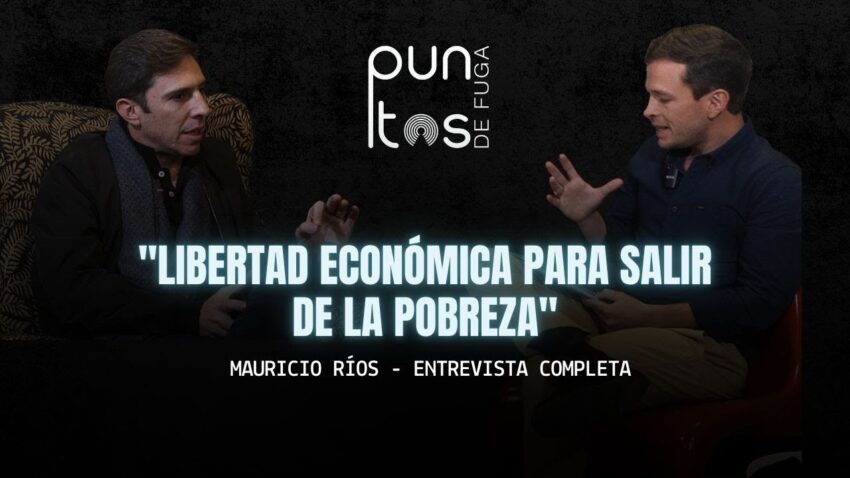An Austrian response from Bolivia to Simon Wilson
The Ludwig von Mises Institute is a think tank of Auburn, Alabama, whose libertarian scientific knowledge production and analysis of economic environment I have been following for about twelve years now. I agreed with almost everything I’ve read, so that has been very important for my professional background. I understand that there have been some changes in the institute over the years, but this time I am surprised the publication of a latest article written by Simon Wilson, and titled What’s Driving Bolivia’s Booming Economy. The fundamental problem with this article is that to analyze the Bolivian economy it seems to fit only on some of the libertarian principles the Mises Institute works on.
The first element that calls the attention of article is that to analyze the Bolivian economy, Wilson does not refer to key elements such as the respect for individual property rights, or even regards the theoretical fundamentals of the powerful tooling of Ludwig von Mises, such as low interest rates, inflation, monetary nationalization, malinvestment, fractional reserve banking, etc. None of these elements has been central to his analysis. Wilson preferred to hold weak political arguments rather than solid economic ones, which makes him, by the way, a victim of the massive international propaganda mounted by the government of Evo Morales.
Immediately after de beginning of his piece, Simon makes hasty and unnecessary concessions to Morales and his government arguing that they´re not the typical old style Latin American socialists, they would have constituted in Nordic style socialists not only politically inclined toward pragmatism, but even to free markets despite the media and its rhetoric that thinks otherwise.
Well let’s see. If by any means the defense of pragmatism really had anything to do with the defense of liberty in its broadest sense, what one could highlight about the government of Morales is, probably without even realizing it, having kept many of the most ambitious structural reforms from the late 80s and early 90s in the region after the socialist hyperinflationary disaster of the time, and, to top it off, constitute the exact measures needed in the same Nordic countries, the European Union and the United States to overcome most of gigantic problems of the Great Recession.
But let’s continue. The nationalization of the oil sector in 2006 was the first measure of the Morales government, and it has meant a strong affront against the individual property rights in Bolivia, and it has ended up being one of the main characteristics of the government for a decade. This should be reason enough to criticize any consequent action and not any other relativistic.
However, while it has allowed the government to have as much resources it has been allowed to expropriate, the nationalization has granted it such powers and competences over the economy, that have ended for expelling foreign private investment in the country and displacing domestic private investment to the costly and dangerous informal economy that Wilson pretends to highlight as an achievement of the government of Evo Morales.
Also, last but not least so far, Simon attributed to Morales to even be a true defender of liberty and free markets, because he is contrary to the guidelines and requirements of the IMF and the World Bank. Simon never learned that Bolivia successfully restructured its debt with the IMF in the 80s, that for many years had to settle with the IMF though no one had forced it, and that also the demands of IMF basically guarantees for the debt payments only by expenditure restraint. To oppose the IMF in this sense is not always a defense of liberty synonym. If the IMF ensures that Bolivian governments will not have the money of their citizens without an explicit consent, then they would even have to be grateful. But this is part of another discussion on smaller caliber.
And at the end, Simon emphasizes the growing informal economy in Bolivia as a good illustration of benign economic policy that the Morales government implements in relation to free markets, when in fact it is only illustration of the problem, not necessarily a success of what could be a manifesto rebel entrepreneurship in Bolivia; any expansion of informality in an economy is actually due to the reprimands of governments that monopolize main activities of the economy. In this sense, there is no way to consider the informal economy of Bolivia as something positive, and if it did it would be despite of Morales and his government rather than because of it.
However, to finally be rigorous beyond the simple critical response to Wilson, and to adjust the analysis of the Bolivian economy to strictly libertarian principles, it is necessary to make a diagnosis using at least some of the theoretical tools mentioned above.
Although Wilson seems to commune with the anti-capitalist side of the story only by the lecture of the macroeconomic figures he is able to only see, and not on the interpretation of the imminent microeconomic reality that he could have, he seems to have been dazed and confused by the extravagance of the figures he mentions. Let us hope that Wilson has not defended the Venezuelan regime in 2004 only because at that time it was growing at 18% of the GDP.
I’m sure Wilson knows that what matters is not how much an economy grows, but how healthily and steadily it grows. That is, the fact that Bolivia is currently the most growing economy in the region does not mean it is necessarily right. Moreover, you may be growing even faster than the GDP formulas allow the government to calculate. The same as the regime that defends, Wilson makes the mistake of thinking that the Bolivian revenue growth depends on natural gas exports and its price.
It is true that the oil drop from last year affected growth, but this is not the cause of the slowdown in more than one percentage point of GDP registered since early 2014, this is an aggravation of the real problem. Wilson is right to note that with falling natural gas revenues the government would be forced to cut spending and social programs, and it would be even tempted to make money out of thin air to compensate such income as Venezuela did, but he has not noticed the Bolivian growth is the result of a number of additional factors to oil.
At the same time, it should be no surprise to anyone understood in strongly intervened market theories that the banking sector in Bolivia has grown and has developed over the past ten years, regrettable and inevitably, in the image and likeness of the international banking, the one that has made each and every one of the series of malinvestment around the globe until 2007. The other reproduction of national income based on the lack of respect for the individual rights of private ownership of the customers of the banking system in Bolivia means, may not have any good results.
It is therefore not by chance that despite their sharp slowdown, Bolivia is the fastest growing economy in the region, while at the same time has the biggest public spending program and highest energy subsidy ever recorded; the lowest credit rates all over Latin America, and the more intense monetary nationalization of the last ten years. Bolivia’s economy represents a typical fictional boom construction, as a result of a truly explosive combination of different demand side hyper-stimulus, exactly like those that preceded the Great Recession around the West.
To make matters worse to the drama Wilson defends until here, we must mention the biggest threats of the past ten years that Bolivia faces even for the short term: because the combination of the whole series of productive and labor rigidities that has been introduced from the beginning, is incompatible with the establishment of a four-year fixed exchange rate, all the capital destruction in state enterprises, the whole series of bad private investments that the typically socialist regulation has led to commit during the boom phase, and all the business losses that the series of indirect, covert and deferred devaluations of the currency, with increases of the minimum wage and double bonuses at the end of every year, they pretend to settle a conventional exchange rate devaluation early through this year probably, with lousy argument, moreover, that the relatively more competitive neighboring countries also have done it.
Is it so difficult to think that Bolivia is not Venezuela in the years after 2004? Before a lack of income, the problem that illustrates the sharp slowdown in the Bolivian economy is all the series of demand side hyper-stimulus addressed from Palacio Quemado in La Paz, and that make of Bolivia a bubble of astronomical proportions.
Finally, Wilson seems to end not only validating the sentence end excessive spending of the oil nationalization he condemns at the beginning, he also seems to have believed all the media campaign of the Bolivian government that has involved no less than the New York Times that Wilson quotes, primarily to end indebting all Bolivian citizens through bond issuance while still booming. What a contradictory paradox. Wilson will understand now that the problem is in the size of government that Morales and his acolytes have implemented undermining the functioning precisely of the free market.
And by the way, does Wilson puts his money where his mouth is?
Mauricio Rios Garcia is the author of La década perdida de Occidente: un manifiesto contra la Gran Recesión, just published in May 2015 by Union Editorial in Madrid, and that has a prologue written by Professor Jesús Huerta de Soto.










